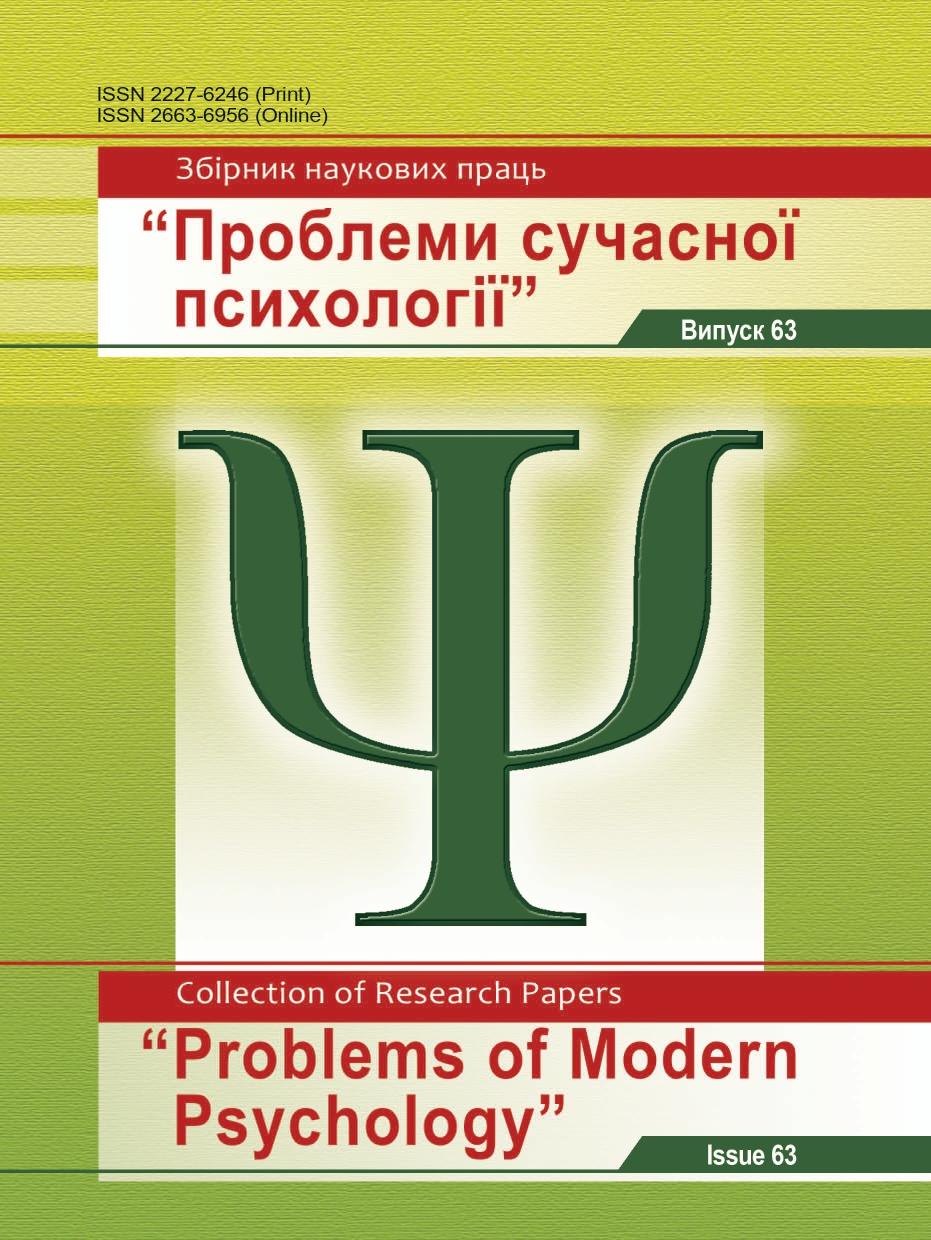Dynamics of the Efficiency of Providing Multidisciplinary Rehabilitation Assistance to Victims with Spine Injuries
DOI:
https://doi.org/10.32626/2227-6246.2024-63.181-198Keywords:
victims, spinal cord injury, state of optimal functioning of the human body, psychocorrection and restorative therapy, rehabilitationAbstract
The degree of damage to spine is now a threat to health and optimal functioning of the human body in the post-traumatic period. Taking into account the peculiarities of the mechanism of psychogenic disorders in the conditions of the full-scale Russian invasion contributes to the specialist’s readiness for stress and conflict situations during the rehabilitation period of work with the victims.
The purpose of the article is to substantiate the dynamics of the effectiveness of providing multidisciplinary rehabilitation care to victims with spinal cord injuries. Psychocorrection should contain a list of training exercises aimed at the development of self-awareness, improvement of psychological culture, improvement of reflective personality characteristics, self-actualization and will involve mastering the skills of voluntary psychophysical self-regulation of the state.
Research methods. Among psychodiagnostic methods, the following were used: the questionnaire «Change in the quality of life due to the disease», the method of determining the intensity of the pain syndrome according to the visual analog pain scale (VAS) and the Minnesota Multi-Profile Personality Questionnaire (MMRI-2) to assess the psychological status of the individual. The characteristics of motor activity were determined according to the dynamics of Hauser’s gait index, which determines the mobility of the victim and his ability to move freely and the need for auxiliary means of support.
Research results. In subjects with spinal cord injury during hospitalization and psychocorrection changes in the gait state according to the Hauser index (muscle strength) were improved from 3.18±0.13 points on average for the group to 4.9±0.63 after the injury. This indicates that after 10-12 months’ treatment all subjects moved without the help of other attendants, some of whom were completely independent, within and outside the home to overcome thresholds and low curbs. Motor activity and gait were improved; there was a noticeable decrease in the intensity of pain, anxiety and depression.
Downloads
Published
How to Cite
Issue
Section
License
Copyright (c) 2024 Lukashenko Yurii

This work is licensed under a Creative Commons Attribution-NonCommercial 4.0 International License.
Copyright
The Editorial Board has the full right to publish original scientific papers containing results of theoretical and experimental research works which are not currently subject to review for publication in other scientific editions. The Author shall transfer to the editorial board of the Collection the right to spread the electronic version of the paper, as well as the electronic version of the paper translated into English (for papers originally submitted in Ukrainian and Russian) by all kinds of electronic means (placement at the official website of the Collection, electronic databases, repositories etc).
The Author of an article reserves the right to use materials of the paper, without approval with the editorial board and the founders of this Collection: a) partially or fully, for educational purposes; b) for writing own dissertation papers; c) for preparation of abstracts, conference reports and presentations.
The Author of an article can place electronic copies of the paper (including the final electronic version downloaded from the official website of the Collection) at:
- personal web resources of all Authors (websites, webpages, blogs etc.);
- web resources of the institutions where the Authors are employed (including electronic institutional repositories);
- non-profit public access web resources (for example, arXiv.org).
But in all cases, it is obligatory to have a bibliographic reference to the paper, or a hyperlink to its electronic copy placed at the official website of this Collection.






